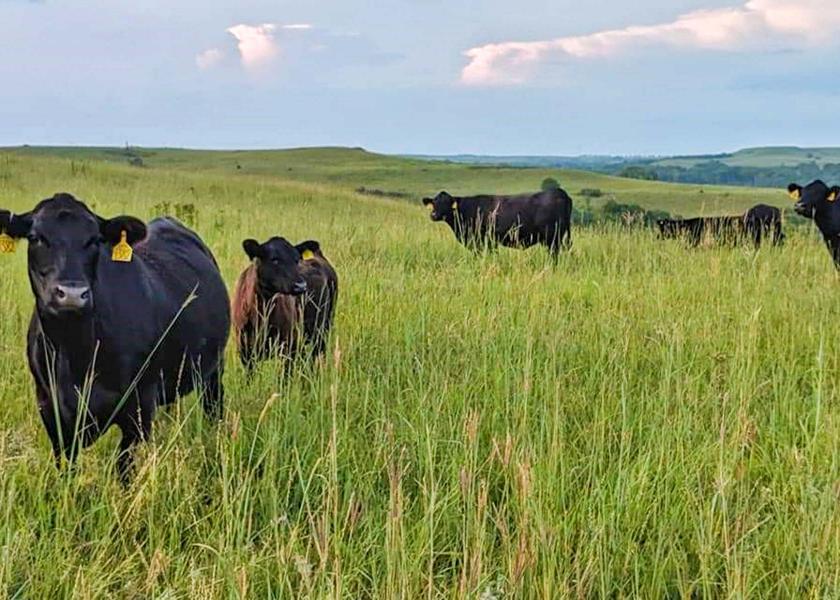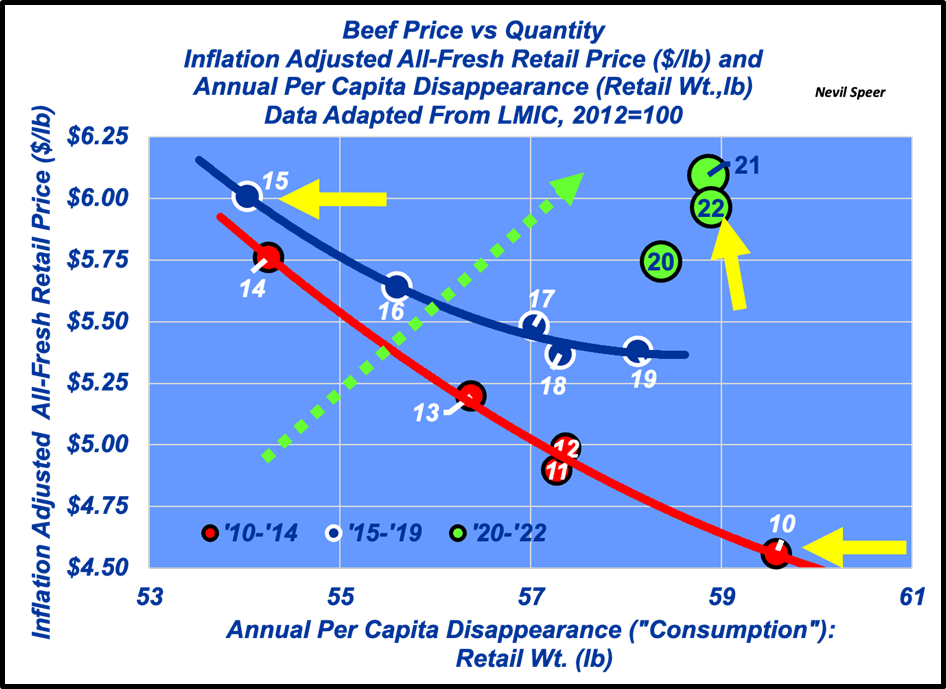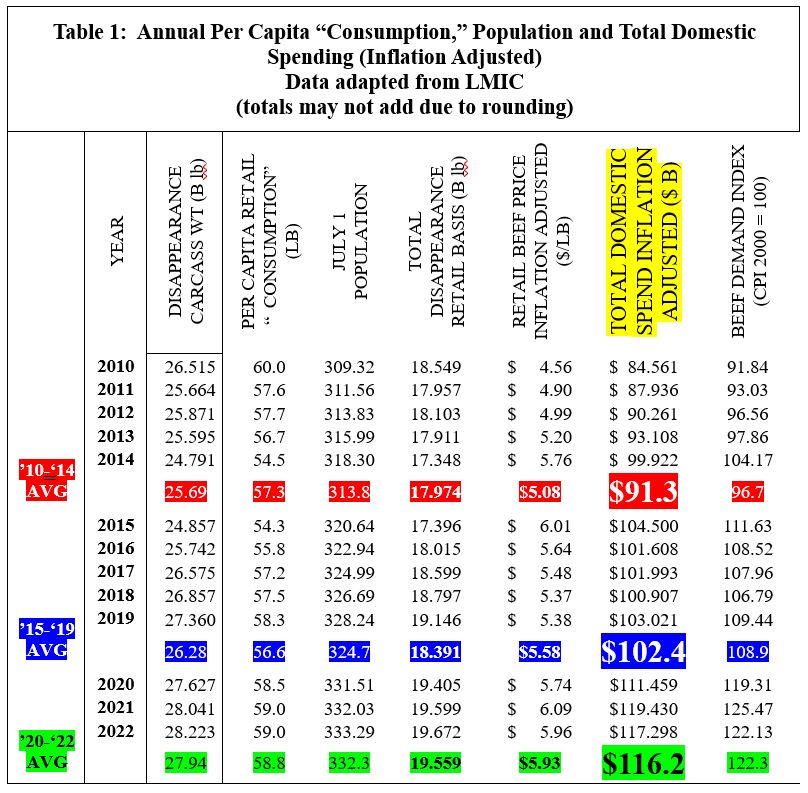Speer: Up-And-To-The-Right

Boondoggle: The distinction between beef consumption and beef demand has been the topic of several columns:
The differentiation is significant, especially as it relates to the importance of the Checkoff. As such, the topic merits yet one more (and perhaps final) column on the topic.
As quick review, OFF Act supporters have leveraged an intentionally misleading talking point: domestic beef consumption patterns indicate waning consumer interest and thus imply Beef Checkoff’s futility towards influencing the marketplace. Dr. Wayne Purcell (A Primer On Beef Demand, 1998) labels that approach “The Per-Capita Consumption Boondoggle.”
He explains, “…per-capita consumption is seen as synonymous with demand. Nothing could be further from the truth.” He further reminds us, “You can sell a quantity of anything at some price. And in the case of beef, a perishable product, we consume essentially all we have. It is price that does the adjusting.” (emphasis mine) Meanwhile, Dr. Glynn Tonsor provides a similar explanation: “This measure [per-capita consumption], independent of prices, provides no meaningful information about demand.”
Demand: The first graph below details annual retail beef price (adjusted for inflation) versus per capita “consumption” (disappearance). Accordingly, the chart represents beef demand as it includes an overview of two measures: 1) the quantity consumers are willing to purchase at 2) various prices. The data points clearly indicate more product (on a per-capita basis) being sold at higher prices over time, i.e. better demand.

The chart establishes three time series: 1) 2010-thru-2014, 2) 2015-thru-2019, and 3) 2020-thru-2022. For example, in 2022, beef disappearance was ~59 lb and garnered ~$5.75/lb (inflation adjusted to 2012). Straight down from there you’ll find 2010; “consumption” is roughly equal but nearly $1.50/lb behind 2022. Alternatively, straight across the top in 2015, retail beef prices were similar but the quantity (“consumption”) measure worked out to just 54 lb.
The chart was included in a previous column explaining the data depicts, “recent quantity / price relationship – i.e. demand (NOT disappearance) – in five-year increments”. It’s a straight-forward concept, but RCALF was predictably dismissive; the group described it as “convoluted” and complained “historical demand data are not presented on a historical time continuum; but rather, the data are presented in an overly complicated and purposefully fragmented and confusing way.”
Dollars: Perhaps a derivation might prove less “convoluted”. What’s not depicted in the first set of data is the influence of population (and hence differences in total disappearance). For instance, per capita consumption in 2022 was roughly equivalent to 2010. However, there’s nearly a 24M person difference between 2010 and 2022. Likewise, as mentioned above, the price point in ’15 was roughly equal to ’22; but not only did consumption lag in ’15 there were also 13M fewer people in the United States. That all adds up!
The second graph parallels the first chart but details those differences. The data represent annual retail price (inflation adjusted) plotted again total domestic disappearance (“consumption” - retail weight basis). Most important to this discussion, the math spells more dollars coming into the industry (see table below). Total domestic expenditures (apples-to-apples, inflation adjusted) during the past three years (’20-’22) have surged 27% (to $116B) from the ’10-’14 period (~$91B).

Up-And-To-The-Right: Checkoff opponents like the consumption-equals-demand head-fake; it matches their disdain for the $1 investment (NOT inflation adjusted). But that Checkoff-bad, bearish consumption narrative quickly proves meaningless amidst real understanding of demand and industry competitiveness.
The beef industry is winning on both sides of the equation: volume and price. That means more dollars! And the Beef Checkoff has been instrumental in that success, helping spur beef demand along in the desired direction: up-and-to-the-right.








